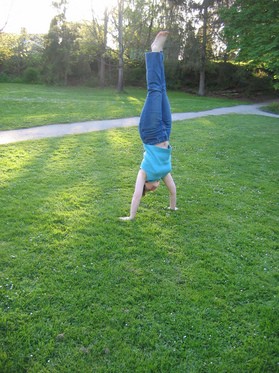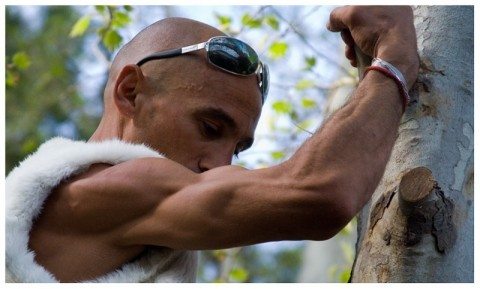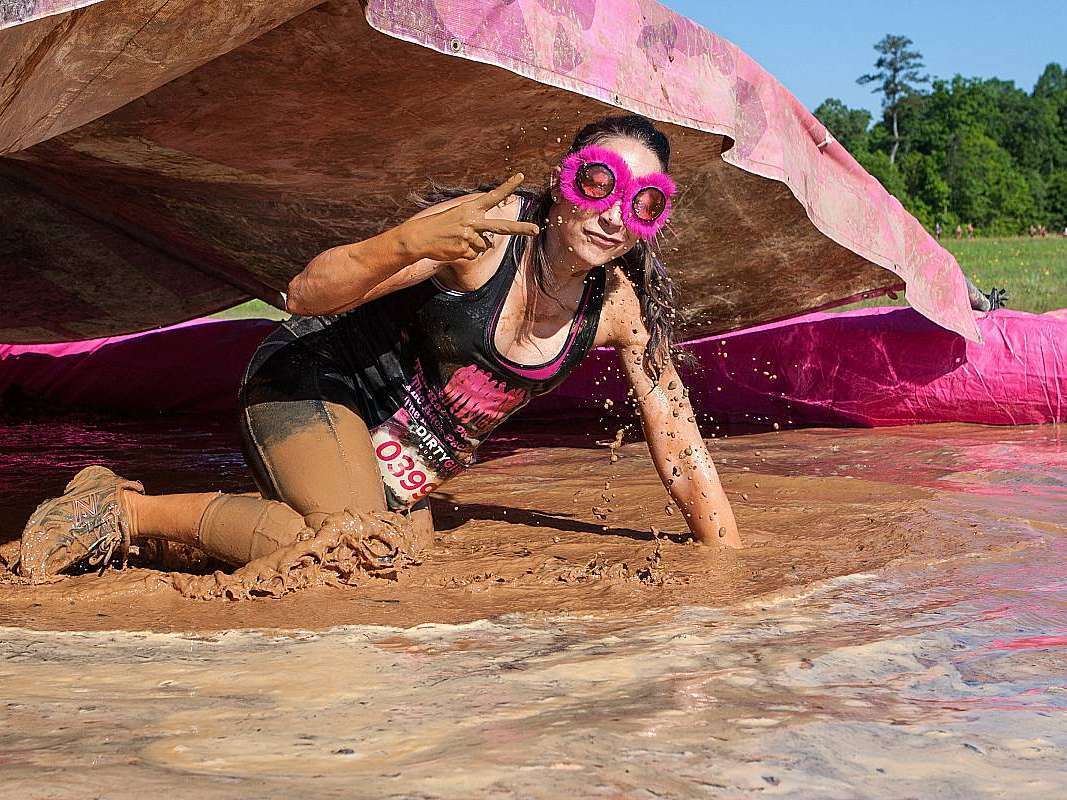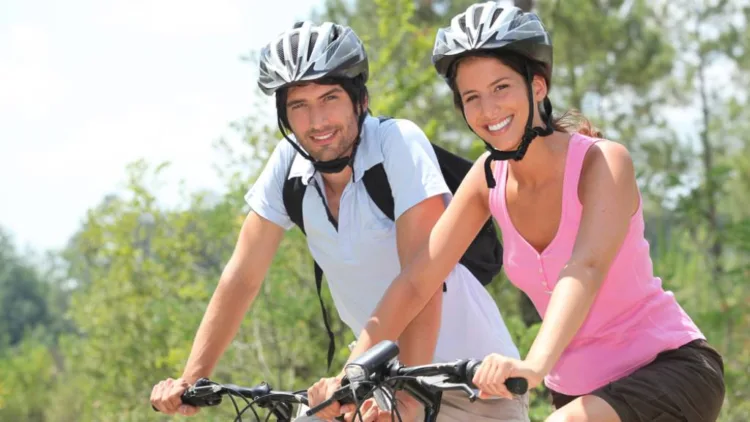When it comes to building functional strength as a triathlete, there is the question of bodyweight exercises verses free-weight exercises.
Bodyweight exercises are exactly what they sound like: exercises that rely on your body weight alone — no weights and no machines that provide resistance.
The most common are push-ups, sit-ups, and squats. Other examples are pull-ups, swinging exercises, dips, and bending or twisting exercises. There are hundreds of variations of these basic exercises.
Benefits of Bodyweight Exercises
Bodyweight exercises are stressful on the body (which is how your body achieves growth) without being damaging to the body.
There is virtually no risk of pulling a muscle doing pushups, as there is with bench presses or flyes.
Squats and the many variations work the thighs, buttocks, and lower back, as well as lungs and calves, without the danger of blowing out a knee or wrenching your back, as there would be with weighted squats or leg extensions or curls.
The range of movement of bodyweight exercises also stretch the muscles, without needing to take time, in addition to your exercise routine, to specifically stretch.
The exercises themselves also act as their own warm-ups. So, for example, if your routine consists of squats, followed by pushups, sit-ups, and trunk twisting exercises, there is no need to engage in 15 minutes of warm-ups or stretching, because the squats will warm you up and the push-ups and twisting exercises will stretch most of the muscles you are going to use for whatever follows.
When To Do Bodyweight Exercises
In general when it comes to sports, free-weight strength training is often preferred where raw strength is helpful — such as in football, or the sport of weight lifting itself.
Bodyweight exercises are often preferred for sports such as wrestling, martial arts and gymnastics, which require more functional strength. In such sports, one needs the ability to use a muscle group over and over again at high levels, which is muscular endurance. Bodyweight exercises such as squats, push-ups, pull-ups, sit-ups, etc. have been shown to be an effective way to improve muscular endurance.
Second, sports such as gymnastics and the martial arts require intense body awareness and mastery. For example, think of the gymnast’s body awareness on the balance beam. The problem with weight lifting exercises (even the good ones like snatches, cleans, jerks, or bench pressing) is that you are more concentrated on the weights themselves. You have to be aware of where the weight is at all times more than where your body is. As long as the weight is lifted and caught in the correct position(s), the body will naturally follow suit.
 Bodyweight exercises take the weights out of the equation. To successfully do such challenging exercises as handstand push-ups, one-legged squats, headstands, and bridges, you have to be focusing on every part of your body. That is why they are so good for wrestling, and other combat sports where your body is in many different positions during a match. To be able to successfully recover and counter attack, you must have full awareness of where each part of your body is at all times.
Bodyweight exercises take the weights out of the equation. To successfully do such challenging exercises as handstand push-ups, one-legged squats, headstands, and bridges, you have to be focusing on every part of your body. That is why they are so good for wrestling, and other combat sports where your body is in many different positions during a match. To be able to successfully recover and counter attack, you must have full awareness of where each part of your body is at all times.
Similarly, in gymnastics, where you flip and end up in many different positions, body awareness is crucial. Perhaps not to the extent as gymnastics, the sport of triathlon does require body awareness and balance. Swim and running technique, as well as cycling position and cadence are all a matter of body awareness and balance.
Not all bodyweight exercises develop body awareness equally. Some of the ones I mentioned above — such as handstand push-ups and bridging — do a very good job, but regular push-ups on the other hand develop it to a lesser extent. The more a bodyweight exercise requires agility and balance, the more body awareness it develops.
Bodyweight exercises are also good for people always on the road, those without money to purchase weights, and those with very little time, as a set of push-ups or squats can be squeezed in at odd moments during the day.
When To Do Free Weight Exercises
Don’t misunderstand me; free weights serve a great purpose.
Nothing packs muscle on a skinny frame like heavy, intense lifting. Nothing is better for increasing raw strength and power for tackling a 210-pound fullback running at full speed, or jacking a fast ball over the centerfield wall.
However, to maximize one’s weight lifting routine you should seriously consider exercises that work multiple muscles at the same time, such as:
If you do these free-weight exercises correctly, they are excellent for building functional strength. Triathlon requires functional strength.
Best Exercises For Triathletes
The 3 sports that comprise the sport of triathlon require you to move your body efficiently through space.
The problem with most strength workouts in the gym is they limit the body’s use of coordinated muscle recruitment with an overly focused emphasis on benches, bars, and special apparatus.
In triathlon, the resistance you overcome is primarily your own. What is missing from most gym workouts is the ability to learn how to balance and effectively move your own body through the mediums of water and air.
For example, check out this brief video that show how to utilize bodyweight resistance to build functional strength:
Here’s an example of an intense triathlon functional strength training session:
The triathlete may want to consider some combination of free weight exercises such as cleans, snatches, jerks, presses, squats, and deadlifts and bodyweight exercises for the purpose of building functional strength.
Some bodyweight functional strength routines include Isometric and bodyweight exercises and calisthenics. This means focusing on resistance provided by your own body both with and without flexation or movement. There are lots of options, and room to be creative with your functional strength training routine. Two key elements would be focusing on core strength and sport-specific strength for swimming, biking, and running.
Such workouts do not require much more equipment than dumbbells, a pull-up bar, a set of resistance bands, a chair, a jump rope, an ab wheel, some guidance from books and videos, a little imagination and some Yoga.
A typical workout session can include pushups, pull-ups, squats, lunges, curls, Hindu squats, pistols (single leg squats), Hindu pushups, handstands and core work.
Here’s a bodyweight routine using a fitness ball to help build functional strength:
Virtually all bodyweight exercises engage the core in some way, which makes them an excellent option for triathletes.




